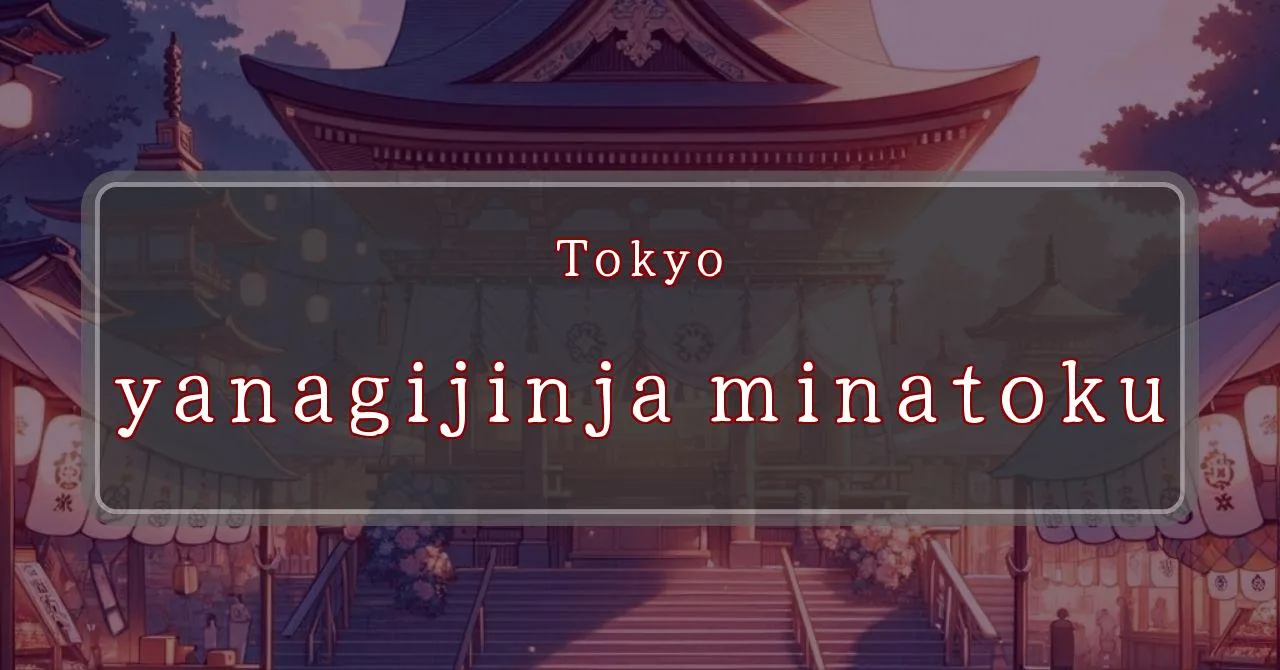Divine illumination in Tokyo’s urban heart
Basic Information
I’ll write an overview.
- Address: 3-12-19 Shiba, Minato-ku, Tokyo
- Phone Number: Not disclosed
- Access: 5-minute walk from Exit A4 of Daimon Station on the Toei Asakusa Line, or 7-minute walk from the north exit of Hamamatsucho Station on the JR Yamanote Line
- Festival Days: May 21st
Main Events and Attractions of the Festival
The main events and attractions of the Yanagijinja Shrine Festival are as follows:
Mikoshi Procession
The mikoshi procession is the main event of the festival. A mikoshi, a portable shrine, is carried through the streets of the neighborhood by festival participants. The mikoshi is believed to be inhabited by the deity of the shrine, and the procession is a way to show respect to the deity and to pray for good fortune.
Shishimai Dance
The shishimai dance is a traditional Japanese lion dance. The dance is performed by two people, one wearing a lion head and the other wearing a lion body. The lion is believed to be a guardian spirit, and the dance is a way to ward off evil spirits and bring good luck.
Kagura
Kagura is a traditional Japanese performing art that combines music, dance, and storytelling. Kagura is often performed at Shinto shrines, and it is a way to entertain the deity of the shrine and to pray for good fortune.
- Content: A performing art that combines music, dance, and storytelling
- Features: Traditional Japanese art form often performed at Shinto shrines
Blessings and Deities
The deities enshrined at Yanagijinja Shrine are:
- Ukanomitama no Mikoto: The deity of food and agriculture
The blessings that Yanagijinja Shrine is said to bestow include:
- Good harvest
- Good health
- Prosperous business
- Good luck in relationships
- Safe childbirth
Origin and History
Yanagijinja Shrine was founded in the late Edo period as the guardian deity of Shiba Matsubacho. After the Meiji Restoration, the shrine was moved to its current location.
Yanagijinja Shrine has survived several major disasters, including the Great Kanto Earthquake and the Tokyo Air Raids. After each disaster, the shrine was rebuilt.
Tips and Notes for Visitors
When visiting Yanagijinja Shrine, please keep the following in mind:
- The shrine is closed on Mondays.
- Photography is not permitted inside the shrine.
- Smoking is not permitted on the shrine grounds.
Parking Information
There is no dedicated parking lot for Yanagijinja Shrine. Visitors are advised to use nearby coin-operated parking lots.
Popular Stalls and Food Carts in Recent Years
| Type of Stall | Description |
|---|---|
| Takoyaki | A staple at Japanese festivals. Characterized by a crispy outside and a creamy inside. |
| Jaga Butter | A simple yet popular snack of hot potatoes lavishly topped with melted butter. |
| Baby Castella | Small castella cakes, sweet and fluffy treats enjoyed by children and adults alike. |
| Grilled Ayu with Salt | Fresh ayu fish grilled whole with salt, a savory taste of Japanese summer. |
| Shaapin | A unique gourmet item influenced by foreign cuisine, with a chewy skin wrapping the filling. |
| Okonomiyaki | A Japanese grilled dish where you often choose your own ingredients for a personalized flavor. |
| Cotton Candy | A fluffy, sweet snack that’s extremely popular with children. |
| Chocolate Banana | A banana coated in chocolate, a fun and visually appealing dessert. |
| Kushiyaki | Various types of ingredients skewered and grilled, an easy-to-enjoy snack. |
| Yakisoba | Fried noodles mixed with a special sauce, a fast food favorite in Japan. |



